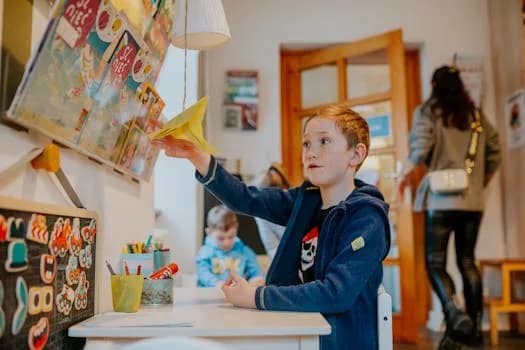Unlocking Creativity with the Theory of “Losing Parts” in Early Childhood Education
Early childhood is a crucial period for developing foundational skills such as creativity, problem-solving, and resilience. One innovative approach to fostering these skills is the Theory of “Losing Parts” in early childhood education. This theory emphasizes the use of incomplete tasks or missing elements in children’s activities to challenge them cognitively and promote creative thinking.
What is the Theory of “Losing Parts”?
The theory of”losing parts” suggests that when children are given tasks or materials that are incomplete or missing certain components, they are encouraged to think outside the box and come up with creative solutions. Rather than simply providing children with pre-made, ready-to-use resources, this theory promotes the idea that incompleteness fosters deeper cognitive engagement. It pushes children to adapt, problem-solve, and build resilience, which are critical life skills.
This theory is grounded in constructivist learning principles, where children learn best through active exploration and engagement with their environment. By introducing challenges in the form of missing parts, educators help children strengthen their ability to think flexibly and creatively.
Why is This Theory Important?
At its core, the theory of “losing parts” prepares children to face real-world problems with an adaptive mindset. By learning how to navigate challenges early on, children develop:
Creative Problem-Solving: Without all the pieces in front of them, children are required to invent new solutions. This can range from figuring out how to complete a puzzle without all the pieces to imagining new uses for incomplete objects.
Cognitive Flexibility: Missing parts force children to approach problems from different angles. They learn to shift strategies when one solution doesn’t work, enhancing their ability to think critically.
Resilience: Children naturally experience frustration when something is incomplete or missing. However, by working through the challenge, they build emotional resilience and persistence, valuable traits for overcoming obstacles later in life.
Examples of the “Losing Parts” Theory in Action
The “losing parts” theory can be applied in various educational settings, from preschool classrooms to at-home learning activities. Here are some practical examples that demonstrate how this approach works:
1. Puzzles with Missing Pieces
Offer children a puzzle that has a few pieces missing. Instead of finishing the puzzle as expected, children must think about alternative ways to complete it or imagine what the missing pieces might look like. This encourages critical thinking and creative solutions to an incomplete task.
2. Building Blocks without Instructions
Provide children with a set of building blocks but intentionally leave out the instructions or guide. Without predefined rules or outcomes, children are free to use their imagination to create their own designs. This activity fosters open-ended play, where children can explore, experiment, and develop their own unique structures.
3. Art Projects with Limited Supplies
In a typical art activity, children might have access to all the colors and tools they need. To apply the “losing parts” theory, restrict the number of supplies they can use. For instance, only offer a few colors of paint or limit the tools like scissors or glue. This encourages children to be resourceful with the materials they have and find creative ways to complete their artwork.
Activities to Support the “Losing Parts” Theory
Incorporating the theory of “losing parts” into daily activities can be both fun and educational for children. Below are a few activity ideas that promote critical thinking and creativity:
1. “What’s Missing?”
Game
Lay out a collection of objects in front of the children and then secretly remove one of the items. Ask the children to identify what’s missing and discuss how they might replace it or adapt to its absence. This simple game enhances memory, observation, and deductive reasoning skills.
2. Incomplete Storytelling
Start telling a story and then stop halfway through, leaving the story unresolved. Ask the children to finish the story using their own imagination. This activity helps develop narrative skills, encourages creative thinking, and allows children to take ownership of the story’s outcome.
3. Fix-It Projects
Provide children with broken or incomplete toys, and ask them to find ways to fix or repurpose them. This might involve using craft supplies to repair a toy or thinking up new ways to play with it in its incomplete state. This activity teaches resourcefulness, perseverance, and critical thinking.
When and Why to Use the “Losing Parts” Theory
The theory of “losing parts” is a versatile approach that can be used in various contexts within early childhood education. It’s particularly useful in situations where you want to:
Promote Independent Thinking: By withholding certain elements, you give children the space to explore and find solutions on their own.
Encourage Creativity: Limiting resources or presenting incomplete tasks allows children to think creatively and use their imagination to solve problems.
Build Resilience: Children need to learn how to handle challenges and frustrations. The theory of “losing parts” provides a safe and supportive environment for children to practice working through difficulties and develop perseverance.
This approach is ideal for educators and parents who want to encourage children to explore new ideas, test different strategies, and grow from the challenges they encounter. It’s particularly beneficial in early childhood because it helps lay the groundwork for more complex problem-solving and creative thinking as children develop.
Conclusion
The Theory of “Losing Parts” in early childhood education offers a unique and valuable approach to fostering creativity, problem-solving, and resilience in young children. By intentionally providing incomplete materials or tasks, educators and parents can encourage children to think flexibly, adapt to new situations, and explore the world with curiosity and resourcefulness.
Whether through puzzles, building blocks, art projects, or storytelling, the “losing parts” theory provides endless opportunities for children to develop critical skills that will benefit them throughout their lives. With a little creativity and guidance, this theory can be easily incorporated into everyday learning activities, making it a powerful tool for educators and caregivers alike.

